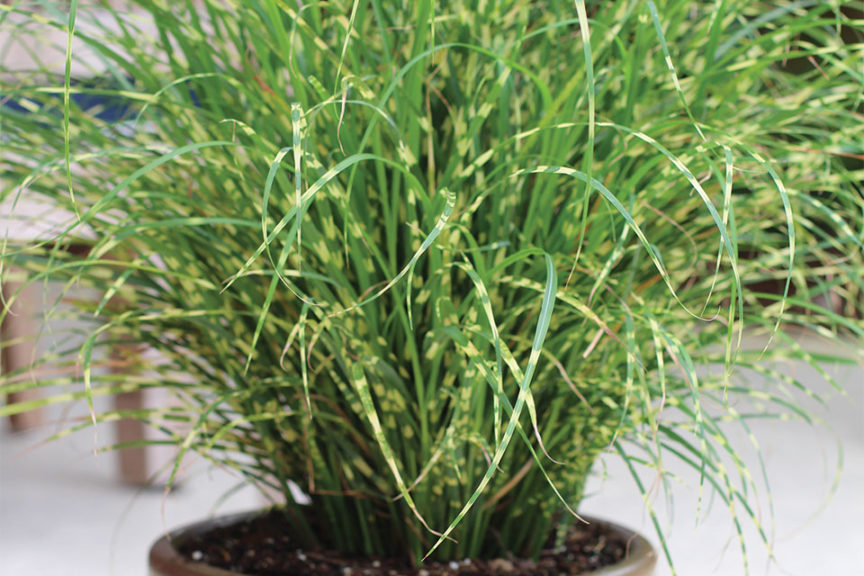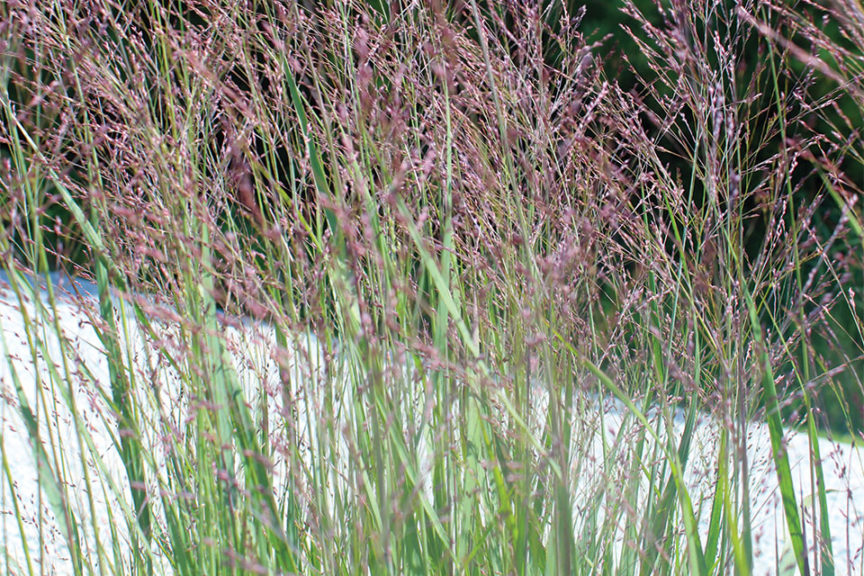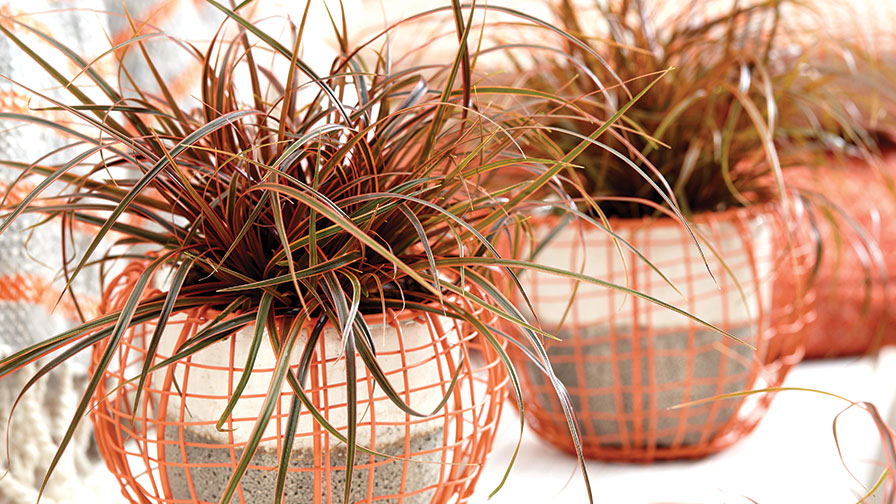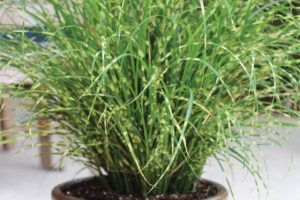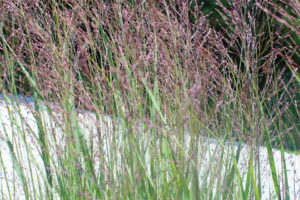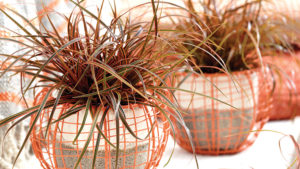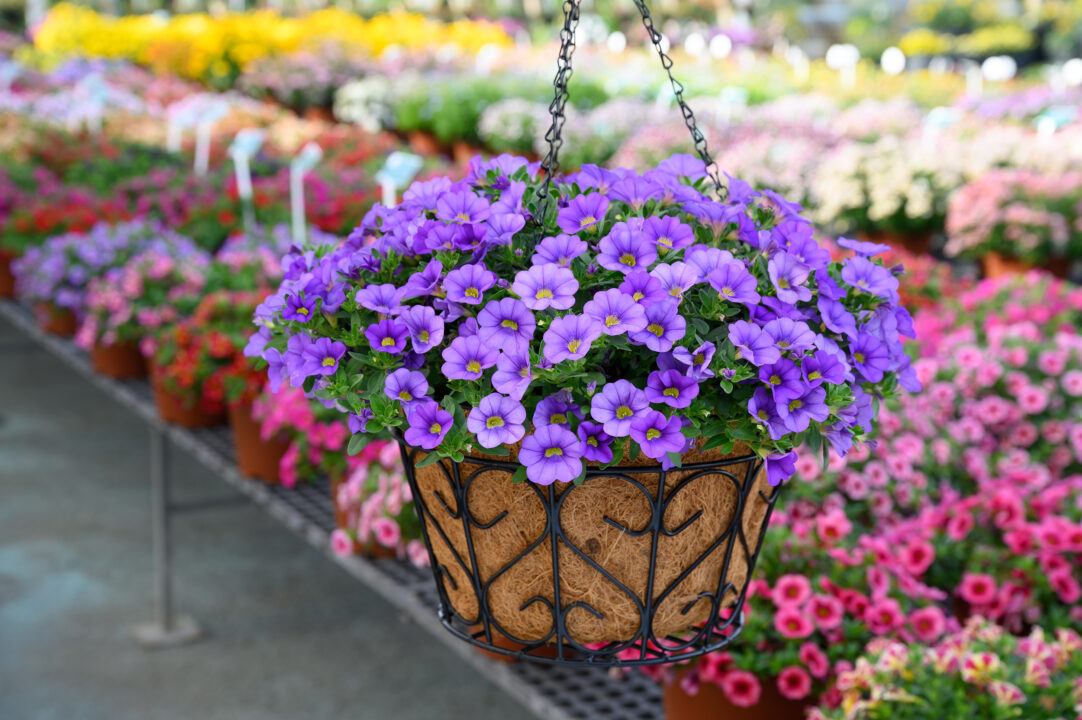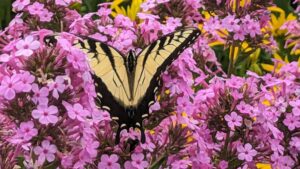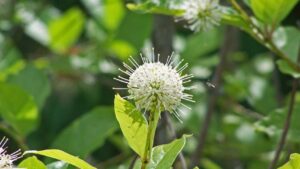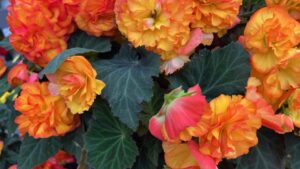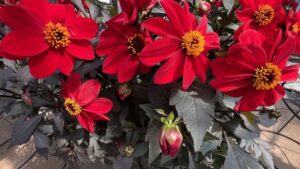New Sterile Ornamental Grasses One Solution to Grass Invasion
Today’s ornamental grasses are poles apart from what was available several years ago. There are more varieties to choose from, colorful foliage for season-long interest, and shorter, more compact selections for growing in containers and small spaces.
“There continues to be improvements with color and sizes for ornamental grasses,” says Pamela Straub, Customer Service Manager at Emerald Coast Growers. “Grasses are also being used for decorating spaces and improvements for eco-friendly applications.”
But while consumers enjoy ornamental grasses’ low-maintenance benefits, they don’t relish pulling them out when they reseed in the garden. That’s led to more interest in native grasses and lower-fertility varieties that behave themselves.
No More Worries About Reseeding
“In some landscapes, reseeding is problematic, and lower-fertility varieties make reseeding easier to control,” says Shannon Currey, Marketing Director at Hoffman Nursery. “It’s happening with Miscanthus and pennisetum, both of which are introduced grasses to the U.S. And we’re seeing interest in having cultivars of native species that don’t reseed as much.”
Aggressive grass species give ornamental grasses a bad rap with consumers, including landscapers and contractors. Green infrastructure, which uses plants to add ecological value to urban landscapes, currently drives some of the demand for grasses, making it even more important to provide landscape professionals and other contractors with workable options.
“Functionality and ecological planting design are big right now,” Currey says. “Designers, contractors, and homeowners are asking for plants that do more than look attractive. They want landscape plantings that function as stormwater management, as resources for wildlife, as economic development drivers, as promoters of health and well-being, and a host of other jobs.”
New Breeding Addresses Invasiveness
Efforts by breeders at North Carolina State University (NCSU) and the University of Georgia (UGA) have been successful in greatly reducing the fertility of genera such as miscanthus and pennisetum, leading to better-behaved introductions coming online for growers and consumers. Good examples are the infertile Pennisetum Etouffee series from UGA (available from Emerald Coast Growers) that has light-pink foxtail plumes and flowers from spring to fall without reseeding, and the Miscanthus ‘Bandwidth’ (Darwin Perennials) with its variegated foliage that was bred at NCSU.
Additionally, there’s a lot of development in North American native grasses, and this is a strong selling point for the market, says Rick Schoellhorn, Director of New Products for Proven Winners. He says most improvements in grasses so far have been in color selection and grower-friendly production advances. Plus, with intensive selection and breeding, the industry is also starting to see new growth habits.
“I think the trend to breed and produce responsible grasses is going to be our future,” says Greg Soles, Product Representative for Darwin Perennials. “Over the last 10 to 20 years, commercial breeders and university breeders are zooming in and making our world more sustainable.”
Six Grass Varieties to Try
With that in mind, here are six ornamental grass varieties for consideration that mind their manners in the garden without losing their functionality.
1. Panicum virgatum ‘Purple Tears’ (Hoffman Nursery), a native selection from the renowned plantsman Piet Oudolf, has a compact, upright habit and striking purple seed heads.
2. Panicum virgatum ‘Prairie Winds Totem Pole’ (Proven Winners Graceful Grasses) is a native switchgrass selection that is drought tolerant, durable, and well-suited for growing in containers and small-space gardens.
3. Miscanthus ‘Bandwidth’ (Darwin Perennials) is a colorful choice for mixed containers. A product of NCSU breeding, ‘Bandwidth’ is an infertile, compact grass with tight, green and yellow bands on the leaves. For larger landscapes, try M. ‘My Fair Maiden,’ which stands 7 feet tall when in flower.
4. Miscanthus ‘Scout’ (Emerald Coast Growers) exhibits beautiful bronze flowers in the fall. It is an infertile gracillimus-type grass that comes from the breeders at UGA.
5. Koeleria glauca ‘Tiny Tot’ (Intrinsic Perennial Gardens) has shorter flower stems, which sit right inside the silver blue foliage.
6. Andropogon ternarius ‘Black Mountain’ (Hoffman Nursery) is not particular about pH and thrives in poor soils. Flowering stems develop reddish hues in late summer.
And for a Bonus, Here are Two Carex
Although they look similar to grasses, carex are not true grasses; they are actually sedges. But don’t discount these workhorse plants. They’re growing in popularity and solve many problems in the landscape, making them invaluable for green infrastructure. Here’s two carex to consider for your product mix:
(Carex scaposa) Cherry Blossom Sedge (Hoffman Nursery) is a showy plant with wider leaves and cherry-pink flowers that blooms in both spring and fall. For every plant Hoffman sells, it will donate 10 cents to the U.S. National Arboretum to support plant exploration and conservation efforts.
Carex EverColor Series (Fitzgerald Nurseries/Concept Plants) features evergreen sedges in a range of colors. In 2019, the first orange carex will join the collection. Uncinia ‘Everflame’ (managed by KiwiFlora) is a hook-sedge with green foliage that has a hint of orange. In the fall, winter, and spring, the entire plant has a beautiful sunset-orange color.




